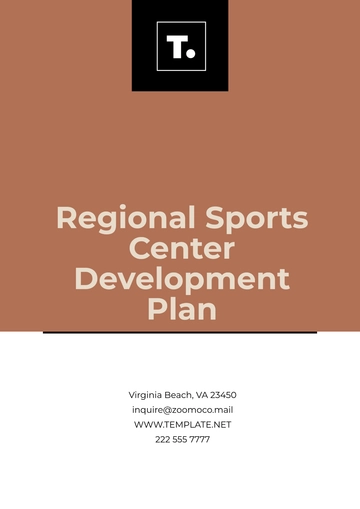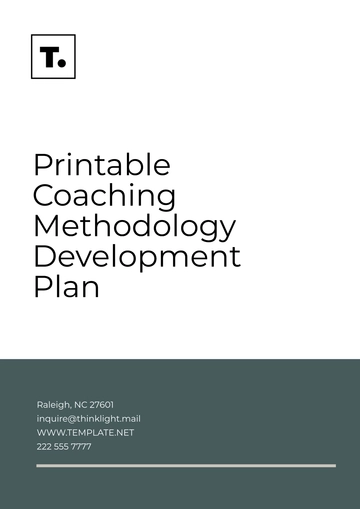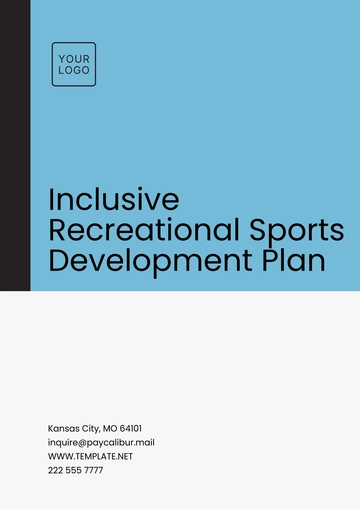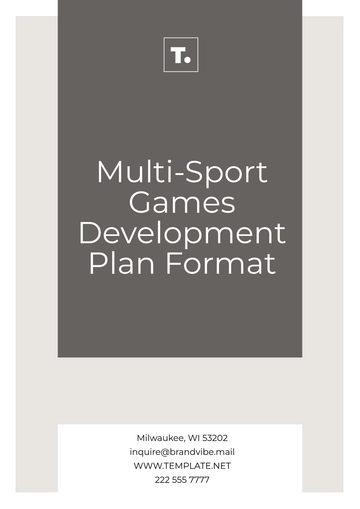Free Individual Career Outline Development Plan

Written by: [YOUR NAME]
I. Introduction
Provide a brief overview of the purpose of this plan, explaining its role in aligning individual goals with organizational objectives. Personalize this section by including your name and the company name where applicable.
Example:
At [YOUR COMPANY NAME], we recognize that fostering the professional growth and development of our team members is essential for achieving both individual and organizational success. As such, the Individual Career Development Plan (ICDP) serves as a strategic tool to guide and support employees like [YOUR NAME] in their journey toward achieving their career aspirations. In this comprehensive plan, we aim to assess [YOUR NAME]'s current performance, identify key areas for growth, and outline actionable steps to propel him towards his professional goals.
II. Current Performance Assessment
Performance Review Date: Indicate the last performance review date.
Key Strengths: List three of your most valuable professional skills or qualities.
Areas for Improvement: Identify three areas where you aim to grow or enhance your abilities.
Example:
Performance Review Date: May 1, 2050
Key Strengths | Areas for Improvement |
|---|---|
Strong analytical skills | Enhancing proficiency in data visualization tools |
Exceptional communication abilities | Developing leadership skills for team management |
Proven track record of meeting deadlines consistently | Improving project management capabilities |
III. Performance Goals
Outline three measurable and specific goals you aim to achieve within the short term. For each goal, provide an actionable plan to accomplish it.
Example:
Short-Term Goals (Next 6-12 Months):
Goal | Action Plan |
|---|---|
Increase proficiency in data visualization tools | Complete an online certification course. Aim to achieve certification within the next six months. |
Attend leadership workshops | Attend leadership workshops and seminars to improve management skills and team dynamics in marketing. |
Implement project management methodologies | Apply project management methods to cut project turnaround time by 15%. |
Define three major professional achievements or positions you want to reach in the long term. Specify the actions you will take to realize these goals.
Example:
Long-Term Goals (Next 2-5 Years):
Goal | Action Plan |
|---|---|
Attain a leadership role within the marketing department | Demonstrate leadership competencies and contribute to strategic decision-making within the marketing team. |
Spearhead innovative marketing campaigns | Led impactful marketing campaigns boosting ROI and enhancing brand presence. |
Mentor junior team members | Guide junior team members to encourage their growth, fostering a learning-focused, collaborative marketing team culture. |
IV. Development Strategies
Training and Skill Development: List courses, workshops, or certifications to attend. Indicate time commitments for learning and areas of focus.
Mentorship and Coaching: Identify potential mentors and the type of coaching support you seek.
On-the-Job Learning: Mention projects or responsibilities to take on for practical learning and skill application.
Example:
Training and Skill Development:
Enroll in a Data Visualization Masterclass on Udemy to enhance skills in data visualization techniques and tools, dedicating at least five hours per week to coursework.
Participate in a Leadership Development Program offered by the company to cultivate leadership abilities, attending workshops and seminars on effective communication, team building, and conflict resolution.
Attend Project Management Professional (PMP) certification training to gain expertise in project management principles and methodologies, dedicating time outside of work hours to study and preparation.
Mentorship and Coaching:
Seek mentorship from the Marketing Director to gain insights into strategic decision-making processes and receive guidance on navigating career advancement opportunities within the company.
Schedule regular coaching sessions with a professional leadership coach to refine leadership skills, focusing on areas such as delegation, decision-making, and team empowerment.
On-the-Job Learning:
Volunteer to lead cross-functional projects that require collaboration with other departments, gaining exposure to different aspects of the business and expanding leadership capabilities.
Collaborate closely with the Sales team to understand customer needs and preferences, tailoring marketing strategies accordingly to enhance customer engagement and drive sales.
V. Resources and Support
Financial Resources: Detail how you plan to fund your professional development, including company-sponsored programs or external scholarships.
Organizational Support: Outline how you will utilize company resources, such as HR guidance or participation in industry events, to support your growth.
Example:
Financial Resources:
Utilize the company's professional development fund to cover the costs of training programs and certifications, submitting reimbursement requests promptly and adhering to budgetary constraints.
Explore external funding options for advanced courses or workshops not covered by the company, researching scholarship opportunities and employer tuition assistance programs.
Organizational Support:
Engage with the HR department to access resources such as mentoring programs and career development workshops, actively seeking guidance and support from HR professionals to navigate career advancement opportunities.
Seek sponsorship from senior leadership for participation in industry conferences or networking events, demonstrating the potential return on investment and value-added contributions to the company's growth and success.
VI. Work-Life Balance
Wellness Initiatives: Include practices to maintain mental and physical well-being.
Time Management: Provide methods to balance career development activities with personal responsibilities, such as time-blocking or task prioritization techniques.
Example:
Wellness Initiatives:
Participate in weekly yoga sessions offered by the company to reduce stress and promote physical and mental well-being, incorporating mindfulness practices into daily routines to maintain a healthy work-life balance.
Take advantage of flexible work hours to accommodate personal commitments and family responsibilities, communicating openly with supervisors and team members to ensure productivity and collaboration are not compromised.
Time Management:
Implement time-blocking techniques to allocate dedicated time for professional development activities, scheduling regular study sessions and skill-building exercises to make consistent progress towards goals.
Prioritize tasks based on urgency and importance, leveraging time management tools such as Eisenhower's Urgent/Important Matrix to focus on high-impact activities and minimize distractions.
VII. Measurement and Evaluation
Define KPIs to track your progress, such as project success rates or leadership feedback.
Schedule periodic reviews with supervisors or mentors to evaluate progress and adapt your plan.
Gather peer feedback to assess collaborative effectiveness and personal growth.
Example:
Establish key performance indicators (KPIs) such as project completion rate, client satisfaction scores, and team engagement metrics to track progress towards goals, regularly reviewing performance data to identify trends and areas for improvement.
Conduct quarterly performance reviews with supervisors and HR professionals to assess achievements and address any challenges or obstacles encountered during the development process, seeking constructive feedback and guidance on potential adjustments to the plan.
Solicit feedback from peers and team members to evaluate the effectiveness of development efforts and gather insights on areas of strength and areas needing improvement, fostering a culture of continuous learning and collaboration within the organization.
VIII. Conclusion
Summarize your commitment to achieving the outlined goals and the mutual benefits for you and your organization. Personalize this section with a note of appreciation for the resources and support provided by your company.
Example:
The Individual Career Development Plan represents a commitment to excellence and continuous improvement at [YOUR COMPANY NAME]. Through the collaborative efforts of [YOUR NAME], his supervisors, and the HR department, we have crafted a roadmap for success that prioritizes skill development, leadership growth, and personal fulfillment. Together, we look forward to celebrating [YOUR NAME]'s accomplishments and witnessing the positive impact of his contributions on our team and the broader marketing community.
- 100% Customizable, free editor
- Access 1 Million+ Templates, photo’s & graphics
- Download or share as a template
- Click and replace photos, graphics, text, backgrounds
- Resize, crop, AI write & more
- Access advanced editor
Enhance your career trajectory with the Individual Career Development Plan Template from Template.net. Tailored for professionals, this customizable and editable template empowers you to strategically map out your career goals and milestones. Crafted with precision and powered by an AI Editor Tool, it ensures seamless customization for your unique journey.





























